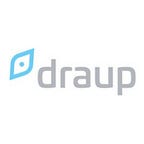How People Analytics is a game-changer in bridging the talent gap
The ever-increasing talent gap combined with the lack of talent strategies and employee engagement is hurting an organization’s talent management and is a pressing issue today, which is why the term “People Analytics” is gaining prominence.
HR is experiencing a significant shift from a transactional to a transformational role. Digital transformation has catapulted many organizations to invest in technology that leverages data effectively, and the HR function is not behind.
Technology and data-driven processes continue to transform every aspect of today’s HR operations. Whether it’s automating laborious tasks or analyzing a mass of People analytics, digital transformation has emerged as a savior for modern HRs.
One of the most sought-after solutions for bridging the present-day talent gap is the integration of People Analytics into HR processes. People analytics collect, clean, and make sense of talent data by deriving statistical insights to make the right decision about people, further improving business outcomes.
With a massive demand for information about what makes employees happy, what makes them stay or leave, what improves productivity, or what creates engagement, People Analytics’ growth is inevitable. It’s one of the in-demand skills HR professionals want to learn.
Let us understand the crucial role of People Analytics in bridging the talent gap.
Understand and Anticipate the Talent Ecosystem
Using external data and your workforce data, you can understand how business trends, automation, and digitization influence business decisions and impact your workforce.
Using predictive analytics, you can develop models to inform your team on talent availability. You can anticipate a talent gap before it comes into existence, so you can develop plans for addressing it.
Global HRs actively use AI-backed talent management tools combined with People Analytics to track industries, organizations, locations, and individual profiles combined with job roles and universities that may be relevant to you.
The search also includes emerging new-age roles, technologies, relevant skillsets, forecasted talent trends, and reskilling programs.
Improve Employee Experiences
With evolving employee expectations, organizations are rethinking their approach to crafting the employee experience. People Analytics lets enterprises actively listen to what employees want and often need before they want or need it. With the right tools, HR can be a more humanized entity that employees learn to depend on.
Organizations can now focus on personalized, individualized engagement strategies. With 85 percent of the workforce either passively or actively disengaged in a disruptive environment, it is essential to know the team’s pulse at large and craft experiences that keep employees engaged and happy while they work.
Improve L&D and Plan Career Progressions
Employee assessments can also enable you to develop personalized development plans. You can test and match employees scientifically with all potential future career path requirements based on their competencies, characteristics, capabilities, faculties, experience, learnings, and skills. These assessments determine the gap between the individual’s current role and the future role for the ideal career path.
An AI-powered workforce planning tool can help you create long-term career plans that motivate your employees by giving them a clear path to self-improvement based on building the skills that they are currently lacking or that they wish to improve.
Transform your Recruitment Strategy
No recruitment strategy can function well without analytics because data is the basis of recruitment. Without the proper candidate or sourcing data, effective recruitment isn’t a very great possibility.
By understanding skill sources and availability through tracking relevant recruiting metrics, you can target recruiting more effectively. You can save costs by putting your resources only into those sources that produce results. Recruitment metrics such as time-to-hire and time-to-fill, among others, can save an incredible amount of time and produce actual productive results.
Reduce Employee Turnover
High turnover rates can contribute to widening the talent gap at your organization and result in both operational and financial losses. HR execs understand that exit interviews by themselves are not a source of valuable data that can be utilized as analytics.
With People Analytics, you can create in-depth insights into employee turnover using active and passive data collection to understand the genuine reasons behind people leaving the organization. You can further use this information to improve employee retention and preserve the necessary talent within the organization.
Draup is a talent intelligence platform built across 30,000 skills in 33 industries. Draup’s extensive database consists of comprehensive data on over 100,000+ courses and career paths specifically designed using AI and ML models to suit every employee. Using Draup, HR execs can look deep within the organization and derive useful analytics that can be used to manage their workforce while assisting productivity and excellence.
